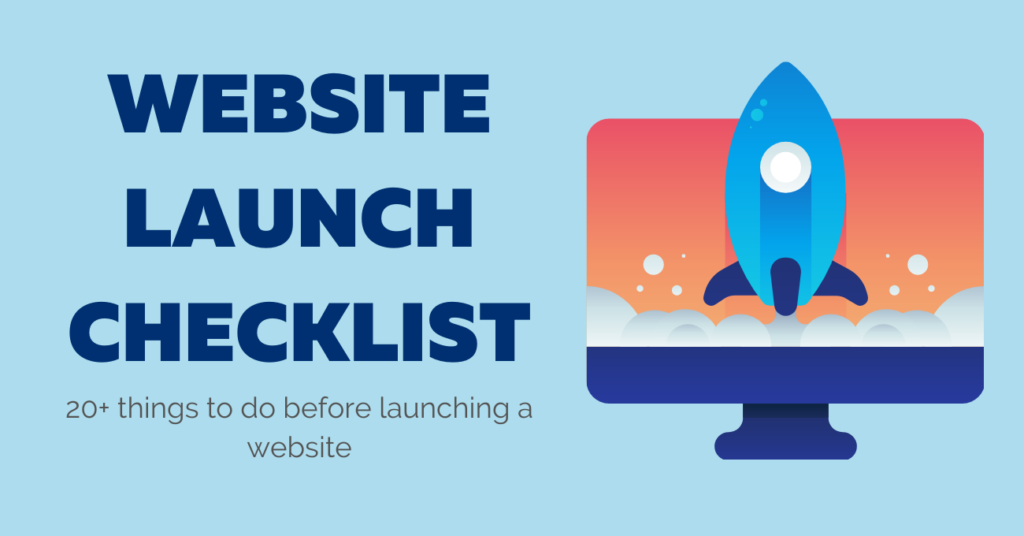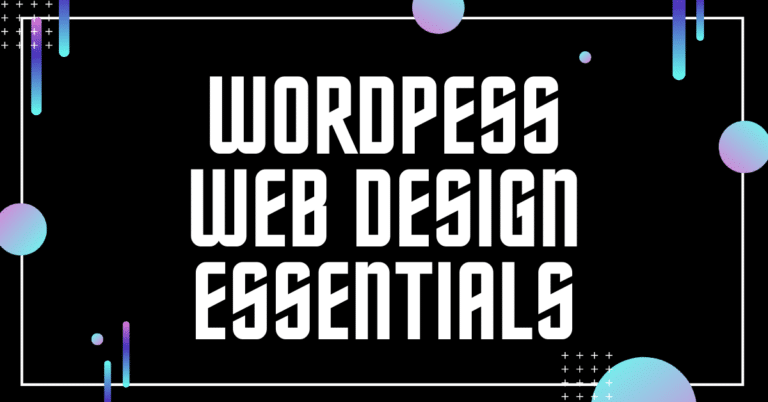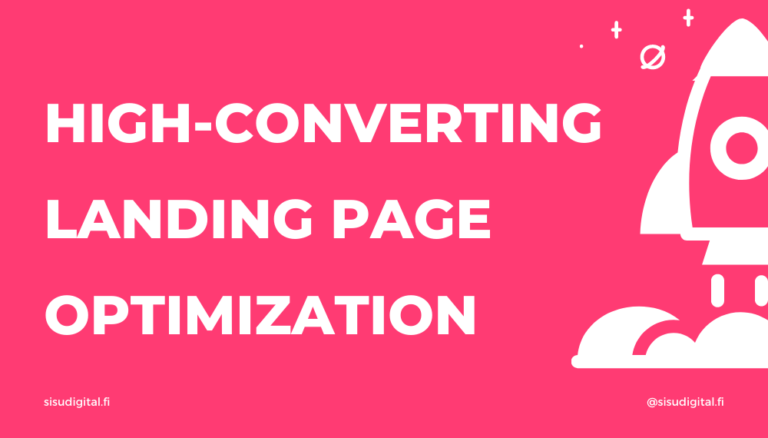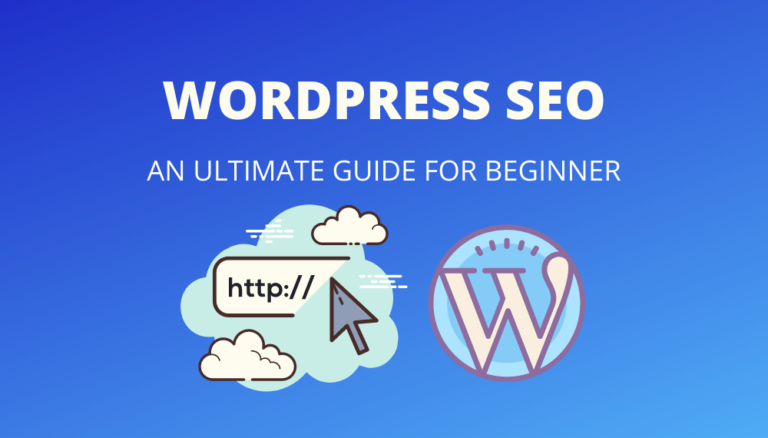Building a website in 2021 is no longer a challenge. There are so many tools and platforms at your disposal that you can build a professional-looking website entirely on your own without any experience in web design or help from web developers. Particularly on the most popular platforms like WordPress, creating a website is just a matter of a few hours. Once your website is ready, you would surely be excited to launch it for the world to see.
But there’s a little more you have to do before the launch. Carrying out a website launch without any hiccups and making sure it’s a success requires you to take care of certain things. The best way to ensure that you don’t miss out on any important elements when preparing for the launch is to have a website launch checklist.
If you are creating your website on WordPress, it becomes even easier to find a WordPress website launch checklist like the one we have curated for you here. We’ve made a comprehensive website launch checklist that includes all the important elements and tasks that you need to complete before your WordPress website goes live.
So, here’s your to-do list before launching a website.
1. Make sure you have a WordPress backup solution
The first thing you will want to do when working on the final lap of building your WordPress website is setting up a backup solution. There is always a risk of losing data or content due to a single tiny error. In case something goes wrong, having a backup option on WordPress can be your lifesaver.
There are many free as well as paid WordPress backup plugins available that take only a few minutes to set up. You can use one of these plugins to automatically save your backups to the cloud regularly.
You can also copy and save your files manually if you want to, but that would be a little bit of extra effort that you can avoid. Backup solutions are also offered by some web hosts. It would be a good idea to choose a web host that offers a backup solution by default so that you don’t have to worry about anything. In case of a mishap, you can restore your site to the way it was with just a few clicks.
2. Check if your SSL certificate is working
Having a secure website is one of the top priorities. To ensure that people trust your site, it is important to have secure data transfer through HTTPS. And to be able to use HTTPS, you have to have an SSL or Secure Sockets Layer certificate. The SSL certificate validates your site’s identity and enables the use of HTTPS. Most web hosts offer free SSL certificates that can be installed in a few clicks on the hosting dashboard.
If your web host is not providing the SSL certificate though, you always use a third-party service and install it manually.
3. Create a custom 404 page
If you’re launching a new WordPress website, a 404 page should not be a problem. But as the site grows there will be pages and URLs that have changed and no longer exist in their original locations. A 404 error occurs when a visitor tries to go to a page that does not exist. It can also appear if a visitor types the URL wrong. Having a custom 404 page will help you point your visitors in the right direction so they can find what they are looking for, improving the user experience.
Your custom 404 pages should be written in clear and simple language. It should also have a search bar so that users can navigate to the page they’re looking for. Adding the link to your homepage and your contact information can also be helpful to the user. You can create custom 404 pages quite easily with Elementor Pro.
4. Test the site’s navigation and internal links
Another important element that can ruin user experience is broken internal links. The navigation through your site should be seamless and for that, you have to fix any broken links that may have occurred during the website development process.
Though it may not be possible to check the link to each and every page on your site, there are many online tools that can help you with it. Run the whole website through the tool and let it check for any broken links. The results will be in front of you in minutes.
Another good way to avoid broken links is by using relative URLs instead of absolute URLs. For instance, if your site is https://xyz.com and you need a URL to link to your About Us page, then the absolute URL would be <a href=”https://xyz.com/about-us”>. And the relative URL would be <a href=”/about-us”>.
Using the relative URL allows you to change your site’s base URL without affecting the URLs of other pages.
5. Ensure all your pages are complete
Any unfinished or incomplete-looking pages can be bad for your WordPress website’s reputation and reliability. That is why it is important to check that your website has all the pages it needs and every page is complete with all the content it requires.
In this regard, it helps to plan ahead when you are building your WordPress website. Often, for someone new to web design, deciding which pages to keep and which ones to leave out can be difficult. So you end up having several pages on the site with nothing much to add to them.
To avoid this, you should know the core pages that your website needs depending on its purpose.
Some of the core pages that every new website has to have are –
- Home Page – Make sure it clearly tells what kind of services or products you offer, has the menu and links to other pages on the site, and has relevant CTAs
- About Page – this page should tell the visitor everything about your brand and business
- Products/Services Page – Should have your product catalog or your services and their features
- Contact Page – Make sure your contact information is updated and correct. This is important for trust-building
- Blog Page – This may not apply to all websites, but if you have a blog this page should be regularly updated
6. Check your content for errors
The content you publish on your website speaks loads about how professional you are. Any errors or typos in the content or the copy can not only be embarrassing but also bad for your brand’s reputation. So, check for any mistakes before your WordPress website launches. Focus on grammar, spellings, redundancies in the content, format, and structure of the content. Ensure that you have enough relevant images and graphics to break the monotony of the text on all pages.
7. Delete dummy content
One thing that can slip your mind quite easily when working on web design is to remove any dummy content from the site before it is launched. We often add placeholder text and images where we want to add content later. If you did not need to add content at those places and did not revisit the pages before your website launch, the placeholder content may be left as it is.
Make sure you delete anything that is not supposed to be on the web pages before you go live with your WordPress website.
8. Remove unwanted plugins, images, pages/posts
There is no reason to keep the plugins, images, pages/ posts if you are not going to use them. Those unwanted elements will slow down your website’s speech, yet make the management difficult.
Deleting unused elements is one of the easiest ways to unload storage space and keep your site running at its best. And even after launching the website, you should do the cleaning up once in a few months.
9. Update your CMS
A CMS can come in really handy, particularly for newbies in the field of web design. A CMS or Content Management System can take care of creating, managing, and updating content for your web pages and blogs.
WordPress itself is one of the most popular CMS platforms and if you are creating your website on WordPress, you wouldn’t have to worry about much. Just make sure that you update the software from time to time to ensure that you enjoy all the latest features in the updated versions.
10. Check your website on a mobile device
It is extremely important for web design to be mobile-friendly today. More and more people are browsing the internet from their mobile devices and so your website has to give mobile users a seamless experience as well. To optimize your WordPress website for mobile devices, you have to make sure that all the elements including the text, images, and graphics are optimized for the mobile screen. A desktop site is difficult to interact with on mobile screens and may cost you valuable traffic.
You can check your website’s mobile-friendliness manually by browsing through it on a mobile device. Or you can use tools like Google’s Mobile-Friendly Test that you can run on your site for free.
11. Check the XML sitemap
You must have already created a sitemap at the very beginning of your web design process. An XML sitemap is a file that contains all the URLs you want search engines to index on your site. It is important so that you can ensure no key pages from your website are missed when Google indexes your site and they can appear in search engine results.
To control how frequently your XML sitemap is submitted to Google, you can install the Google XML Sitemaps plugin on WordPress. It will automate the submission process of submission every time a new page is published on your site.
12. Check whether the site functions properly on different browsers
A good website should perform equally well on all popular web browsers. It adds to the user experience and brings your site more traffic as well. So make sure to check your WordPress website’s compatibility with all major browsers.
Testing manually is good enough, given the fact that there are hardly 3 or 4 most popular browsers that you need to test for. But there are online services, like BrowserShots or BrowserStack Screenshots, that you can use as well if you want to run tests on more browsers.
13. Check your website loading speed
Your website’s performance also depends on its loading speeds. Loading speed is not a factor for improving user experience but is also used by Google as a parameter for ranking sites. So it’s important to test and optimize your website’s loading speed before the launch.
To improve your WordPress website’s loading speed, you can install a caching plugin. It helps cache certain files on the user’s browser so that the next time they visit your site, it can load faster. Other options for improving speed include optimizing the images and videos, installing CDNs, and choosing a good hosting service.
14. Make sure search engine indexing is allowed
Usually, when you are still developing the site it is advisable to keep search engine indexing disabled so that the site does not appear in search while it’s still under construction. But when you are about to launch your completed website, don’t forget to enable the search engine indexing again.
It is extremely easy to change the setting in WordPress. Just go to Settings Readings and untick the box against “Search engine visibility”.
15. Check for SEO and add metadata to all pages
For your website to rank better in search, SEO is essential. Make sure that your site’s SEO is on point. Check whether you have added meta titles and meta descriptions for each page. Make sure the content is keyword optimized, the URLs are search-engine friendly and all pages are crawlable.
For your WordPress website, you can use an SEO plugin like Rank Math to optimize your site for search.
16. Test all your forms
The forms on your website are as important as the content. Most websites today have contact forms, sign-up forms, registration forms, and more. Before your WordPress website launches, make sure that all your forms appear and function correctly. Ensure that the data collected by these forms is stored efficiently. Send a few test submissions. Use some sample email ids to check whether the forms are creating your email lists properly. Also, check whether you have set up a custom confirmation message for each form and whether these are being delivered to the users’ email ids.
17. Test all social integrations
Make sure that you have added social sharing options to your web pages and verify if they are working properly. Check whether they link to the right pages, whether you have added all the important social media buttons, and if the sharing feature is working correctly.
18. Install web analytics
Web analytics can help you monitor your site’s performance and make better decisions for improving it. It generally shows the amount of traffic you are getting, the user behavior, the demographic data, and much more. For WordPress websites, the go-to analytics tool is Google Analytics. It is a free tool that you can integrate with WordPress to gain all the important insights and real-time stats on your website’s performance.
19. Setup email for your website
You will need to set up an email for your WordPress website to send transactional emails. Hosting your website and email from the same web hosts can pose a problem as your email won’t work if your website is down. Some hosts completely disable sending emails from their server.
You can use a dedicated email sending service and a WordPress SMTP plugin instead or using different hosting providers for your website and email.
20. Make sure your permalinks are optimized
Check your permalinks and make sure they are optimized for SEO. Permalinks that are descriptive of the content of the page are usually easy to read as well as good for search engines. These give your users and search engines more information about the web page.
For instance, https://xyz.com/?p=69384 is not as helpful as https://xyz.com/website-launch-checklist-2021.
The latter is a more optimized permalink and that is the kind of structure you’d want to follow.
21. Make sure the legal pages and policies are correctly set up
Lastly, on your website launch checklist, don’t forget to spend some time on the legal stuff. Make sure that your Terms of Service are available on the website. Privacy policies should also be included to build trust among users. Make sure that the site is compliant with data protection regulations and includes cookie consent.
There are several WordPress plugins that can help you with these legal matters and simplify compliance.
Conclusion
It may seem like the job is over once the website is designed and developed, ready to roll out. But though a mammoth portion of the work is done, checking every detail before the website launch is just as important. A website launch checklist can make this task easier for you.
So, go ahead and make this WordPress website launch checklist your own.
Want to learn more about web design, SEO, and digital marketing? We at Sisu Digital have a lot of other useful resources for you. We can help you with designing and developing your website too. Many startups and SME’s around the world have seen great results with our digital solutions. Get in touch with us to know more about our world-class web design services.








